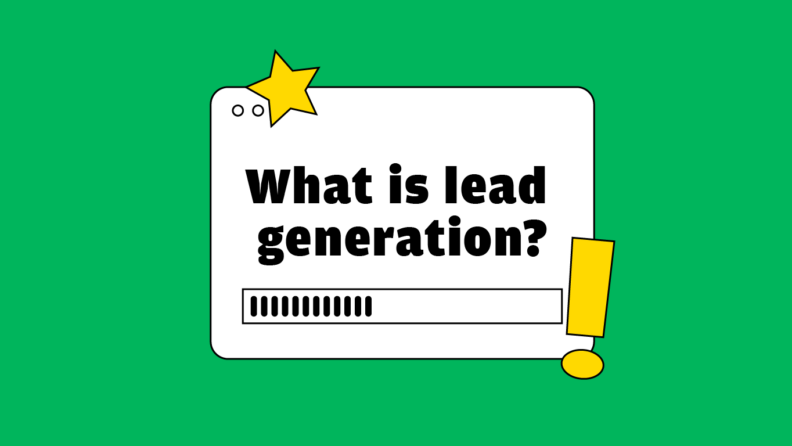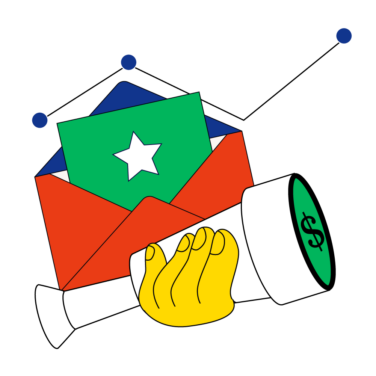Lead Generation: The Revenue Rocket: Lead generation marketing is essential for revenue, focusing on attracting potential customers and converting them into paying clients.
Quality Leads Are Gold!: 79% of marketers prioritize generating quality leads above all other objectives, underscoring the importance of attracting interested and valuable prospects.
Money Talks in Lead Gen: 78% of businesses plan to increase or maintain their lead generation budgets, signifying its critical role in marketing strategy.
Leads vs. Brands: Marketing Showdown: Lead generation aims to convert prospects into customers, while brand marketing enhances brand recognition and reputation among target audiences.
Inbound vs. Outbound: Lead Gen Faceoff: Inbound relies on organic channels for higher quality leads showing initial interest, whereas outbound uses paid campaigns to attract prospects.
Lead generation marketing is one of the most important ways for any business to produce revenue. According to market research firm eMarketer, generating more quality leads is the top goal of 79% of marketers worldwide, more than any other marketing objective. And companies are willing to invest in lead generation, with 78% of businesses planning to increase or maintain their demand generation budgets.
This guide explores lead gen tools and a proven 7-step process to help marketers create effective lead-generation campaigns.
What Is Lead Generation Marketing?
Lead generation marketing is the process of identifying potential customers for your business, developing their interest in your products and services, and collecting their contact information.
The ultimate goal is to get these prospects to visit your website or talk to the sales team, converting them into paying customers. Lead generation marketing is one of the two most critical goals of the marketing function—and key to the success of your customer acquisition strategy.
Lead Generation vs. Brand Marketing
While lead generation focuses on finding prospects who can be turned into customers and collecting their contact information, brand awareness marketing concentrates on improving a brand's recognition and reputation among the target demographics.
Inbound vs. Outbound Lead Generation
There are two main lead generation sources: inbound and outbound.
| Inbound lead generation | Outbound lead generation |
| Relies on organic growth channels like social media posts, search-optimized blog content and referrals from reviews. | Uses paid marketing campaigns like social media ads, Over-The-Top ads, Pay-Per-Click ads, and Local Service Ads |
| Higher quality leads because they show interest first. | Lower quality leads because you’re casting a wide net. |
| Harder to personalize for one person. Mostly segments. | Easier to personalize for one person. |
| Reaches a lesser but more tailored audience. | Reaches a large but less tailored audience. |
| Easier to measure the results | Harder to measure efforts |
| Cost less over a longer duration | Cost more over time |
| Less control over sales process | More control over sales process |
Popular inbound lead generation methods
Inbound lead generation entices potential customers to visit your website or contact you for more information about your products and services. Think of it as a type of pull marketing.
- Content marketing: Content marketing can involve publishing blog posts, white papers, case studies, surveys, tutorials, listicles, best practices, and beginner's guides, and the content can be in different formats like text, webinar, podcast, infographic, and video. The goal is to produce materials useful to your target audience to draw them to your website and share their contact information.
- Social media marketing: You can use social media to promote the content on your website. For example, post on LinkedIn with a link to your latest blog post to drive traffic. Alternatively, create original content for your social media accounts to generate leads, such as a survey or a giveaway that collects email addresses.
- Search engine optimization: Your content only works if your target audience can find it. SEO (search engine optimization) seeks to improve your content's position in search engine result pages. While many companies outsource their SEO operations to external experts, you can also increase your content's search engine position by implementing proven SEO practices, such as building relevant backlinks, incorporating targeted keywords, and including appropriate meta titles and meta descriptions. You can also leverage SEO tools like Moz Pro, AWR Cloud, and Ahrefs.
Popular outbound lead generation methods
Outbound lead generation reaches out to potential customers to promote your content or sell your products and services. This lead generation strategy is a type of push marketing.
- Email marketing: The most effective email campaigns usually target people who already know your brand and have subscribed to your email list. Make sure your email adds value to your recipients and include a call to action, such as "Click here to join our beta product launch program," to generate leads for your lead funnel.
- Direct mailing: While it may seem old school, direct mailing can be an effective lead generation tool for select demographics—such as seniors—and industries, including dentists, auto dealers, and other locally-focused businesses.
- Social messaging: This method involves directly contacting a prospect via a social media platform's private messaging function, such as LinkedIn Messaging or Twitter Direct Message. While labor intensive, social messaging can be valuable in specific situations, such as startups looking for beta product users or professional service firms seeking highly-targeted prospects.
- Cold calling: Most people dislike getting calls from strangers, so think twice before resorting to this old-school lead gen method. That said, it does exist and some companies make it work for them. These tools for cold calling success can make the process smoother.
Why Lead Generation is Key for Growth
Improving your brand awareness and reputation is good, but getting people to buy your products and services is even better. To ensure the growth and success of your business and replace customers lost to churn, you need a continuous flow of prospects.
Lead generation marketing produces a flow of potential customers and feeds them to your sales funnel to generate new revenue. An effective lead gen operation can significantly improve your sales performance by finding and developing qualified leads who are a good fit with your company's products, making the sales process smoother.
Step-by-Step Process for Implementing Lead Generation
Now, let’s get to the good stuff—how to actually run a lead generation campaign that works.
Step 1: Define Objectives
Start your lead generation campaign by aligning your goals with your SaaS business's broader growth strategy. Avoid vague objectives like “increase leads.” Instead, be specific and tie your objectives to measurable outcomes, like:
- Generate 200 trial sign-ups with a projected 20% conversion rate in Q4.
- Increase demo requests by 25% for enterprise customers with a $50M+ revenue in Q3.
Step 2: Understand Your Target Audience
Effective SaaS lead generation requires a deep understanding of your buyer personas. But we’re not talking just demographics.
SaaS customers are often influenced by specific pain points tied to their tech stack, operational inefficiencies, or their need for scalability. In this step, you should dive into what triggers their buying decisions—for instance, a growing need for automation as a company scales. By understanding what drives their buying decisions, you can tailor your messaging to show exactly how your SaaS product can solve their problems.
Step 3: Build Landing Pages & CTAs
Next comes your landing pages and CTAs, which should reflect the longer decision-making process typical of your customers.
Suppose your product offers a complex solution. In this case, a simple “Sign Up for Free” CTA might not cut it. Instead, think “Book a Demo” or “See How It Works,” paired with trust-building elements like case studies or testimonials. A/B testing these pages will show you what resonates best with your audience, whether it’s a focus on ROI or customer success stories.
Step 4: Qualify and Score Leads
Not every lead is created equal. For SaaS companies, it’s all about finding the ones who are most likely to convert.
Lead scoring, based on both firmographic data (like company size) and behavioral data (like webinar engagement), will also help your sales team focus on high-potential prospects.
This step also reduces friction between marketing and sales, aligning both teams around the same qualified prospects.
Step 5: Select Your Marketing Channels
Choosing the right channels to reach your audience is crucial, especially in the competitive SaaS space. Early-stage prospects might be hungry for educational content, while those closer to making a decision will want specific use cases or hard numbers on ROI.
Case In Point
Zendesk uses webinars and technical blogs as key parts of its strategy, educating prospects about how their customer support solutions can solve specific pain points. Similarly, if you’re targeting enterprise decision-makers, LinkedIn and Google Ads will likely serve you better than Instagram.
Step 6: Automate, Measure, and Optimize
Automated lead generation tools like HubSpot, Marketo, and MySQL databases are crucial tools for scaling SaaS lead generation.
HubSpot itself uses its own CRM and marketing tools to nurture leads through automated email sequences. It also regularly runs A/B tests on landing page images to see what resonates best with users. The company's process of continuous optimization allows it to keep trial-to-paid conversion rates high.
7. Build Long-Term Engagement
Lead generation doesn’t stop at sign-ups or demo requests in SaaS. To convert leads, long-term engagement is essential.
Build a lead nurturing strategy with automated emails, targeted offers, and educational content that addresses specific pain points at each stage of the buyer’s journey. Tools like CRM systems (e.g., HubSpot, Zoho) can track engagement and trigger personalized outreach at the right time, improving your conversion chances and reducing churn.
Tools for Automating Lead Generation
To scale lead generation, SaaS companies need a smart toolset that automates the whole process—from capturing leads to guiding them through the sales funnel.
A Customer Relationship Management (CRM) system, like HubSpot or Zoho CRM, is a must-have here. These systems pull together lead data, track every customer interaction, and streamline workflows like sending follow-up emails or assigning tasks to your sales team.
Top CRM Software
Alongside CRMs, lead management tools streamline the qualification and scoring process, ensuring your sales team focuses on high-intent leads.
Top Lead Management Software
HubSpot’s built-in lead scoring feature is particularly useful for SaaS companies, allowing them to automatically assign scores based on actions like signing up for a trial or attending a webinar.
Behind the scenes, databases like MySQL store and manage all that lead data. When integrated with your CRM, the data syncs in real time, making lead segmentation and personalized outreach a breeze. Putting these lead management solutions together means less manual work, better resource management, and more conversions.
Measuring Lead Generation Success
To effectively measure lead generation success, focus on tracking three key lead generation metrics: conversion rates, cost per lead (CPL), and lead quality.
Conversion rates show how well your campaigns turn visitors into leads or customers, while CPL reveals how much you're spending to acquire each lead—typically $280 for paid B2B SaaS leads and $147 for organic leads. Lead scoring helps you focus on high-intent leads that are more likely to convert into sales, ensuring your marketing efforts are directed where they matter most.
A/B testing also plays a key role in improving your campaigns. By tweaking elements like CTAs, landing page designs, or email sequences, you can see what drives better conversions and lead quality.
Take testing email subject lines, for example: it can reveal which one generates more demo requests. In fact, A/B testing helped improve Notion's open rates by 20%, driving product adoption.
Consistently running these tests fine-tunes your strategy, helping you lower CPL and boost lead-to-customer conversion rates.
Get Ready to Run Your Own Campaign
You've got the tools, now it's time to implement your lead generation strategy and run your first campaign. Good luck!
Take your RevOps to the next level
We're launching our newsletter soon. Sign up for expert advice, software reviews, and career resources delivered to your inbox.


